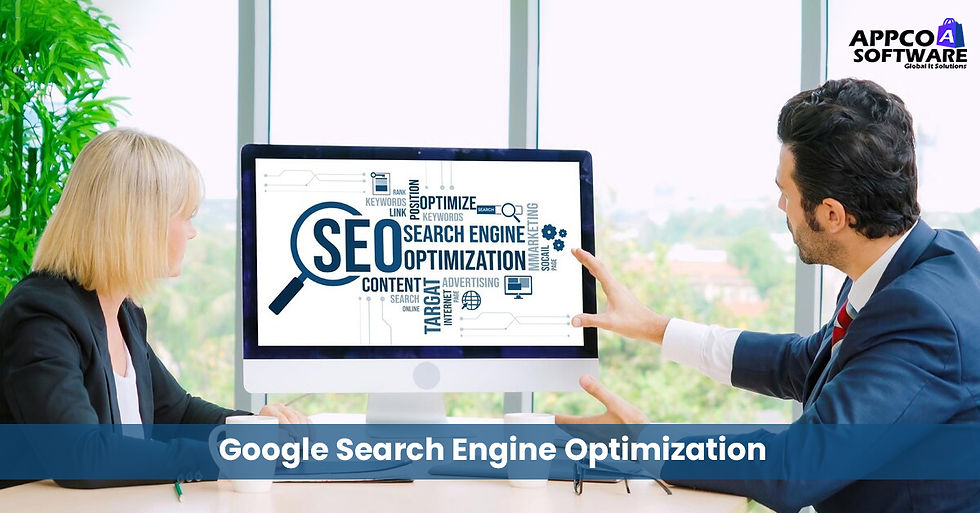Build a Professional Website with WordPress Design and Development
- Appco Software

- Feb 19
- 3 min read

A website is essential for any business or personal brand looking to establish an online presence. Among the many website-building platforms available, WordPress website design and development stands out as the most popular choice. WordPress powers over 40% of websites worldwide due to its ease of use, flexibility, and powerful customization options. In this article, we’ll explore the key aspects of designing and developing a WordPress website, from selecting a theme to optimizing performance.
Why Choose WordPress for Website Design and Development?
WordPress is a powerful content management system (CMS) that offers several benefits, including:
User-Friendly Interface—No coding knowledge is required to build and manage a WordPress site.
Highly Customizable – Thousands of themes and plugins allow for unique website designs.
SEO-Friendly – WordPress includes built-in SEO features to improve search rankings.
Scalability—suitable for small blogs, corporate websites, and large eCommerce stores.
Strong Community Support—A vast community of developers and users offers guidance and updates.
Key Steps in WordPress Website Design and Development
1. Choose a Domain and Hosting Provider
Before you start building a website, you need a domain name (your website’s address) and a hosting provider. A good hosting service ensures website speed, security, and reliability. Popular WordPress hosting providers include Bluehost, SiteGround, and WP Engine.
2. Install WordPress
Most hosting providers offer one-click WordPress installation, making it easy to set up your site. Once installed, you can access the WordPress dashboard to start designing your website.
3. Select a Theme for Your Website
WordPress offers thousands of free and premium themes to give your website a professional look. When choosing a theme, consider:
Responsiveness—The theme should be mobile-friendly.
Customization Options—Choose a theme that allows you to modify colors, fonts, and layouts.
Speed and Performance—Lightweight themes ensure faster website loading times.
Popular themes like Astra, OceanWP, and Divi provide excellent customization features.
4. Customize Your Website Design
Once you’ve installed a theme, customize it to match your brand identity. Use the WordPress Customizer to change site colors, fonts, and layouts. You can also add a logo and set up a navigation menu for easy site navigation.
5. Install Essential Plugins
Plugins enhance website functionality. Some must-have plugins for WordPress website design and development include:
Elementor—A drag-and-drop page builder for easy design.
Yoast SEO—Helps optimize content for search engines.
WP Super Cache—Improves website speed and performance.
Contact Form 7—Allows users to submit inquiries via forms.
6. Create Important Website Pages
Your website should include essential pages such as:
Home Page—The main landing page that introduces visitors to your brand.
About Page—Provides information about your company or personal brand.
Services/Products Page—Showcases what you offer.
Blog Page—Helps attract visitors through valuable content.
Contact Page—Provides ways for customers to get in touch with you.
7. Optimize Your Website for Performance
A fast-loading website enhances user experience and improves SEO rankings. Some tips for optimizing performance include:
Using a caching plugin to speed up load times.
Optimizing images using compression tools like Smush.
Choosing a lightweight theme to reduce unnecessary scripts and files.
Enabling a content delivery network (CDN) to improve global site speed.
8. Make Your Website Mobile-Friendly
With more users browsing on mobile devices, ensure your website is mobile-responsive. Test it on different screen sizes to ensure smooth navigation and readability.
9. Secure Your WordPress Website
Website security is essential to protect against hackers and data breaches. Improve security by:
Using strong passwords and enabling two-factor authentication.
Installing a security plugin like Wordfence or Sucuri.
Regularly updating WordPress, themes, and plugins to prevent vulnerabilities.
Backing up your website regularly using a plugin like UpdraftPlus.
10. Launch and Maintain Your Website
Once your website is complete, test all features and pages before launching. Regular maintenance is crucial for long-term success, so update your plugins, monitor site speed, and publish fresh content regularly.
Conclusion
WordPress website design and development offers a flexible and powerful way to build a professional online presence. By choosing the right theme, customizing your site, installing essential plugins, and optimizing for performance, you can create a successful website that attracts and engages visitors. Whether you’re starting a blog, business site, or online store, WordPress provides all the tools you need for long-term growth.






Comments